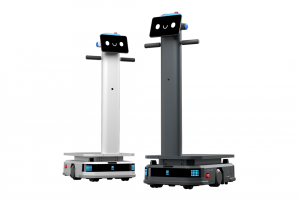Smart Pills raise privacy concerns in personally connected world
This week’s Smart Health series features rising concerns over the use of smart pills, a collaboration that enhances a wearable pet tracker, and a wrist-worn device that lets you control your world.
![]()
.
Will smart pills cause privacy issues?
.
ePill is one example of a smart pill designed to monitor patient behavior and streamline treatment plans. Developed by Proteus Digital Health, ePill aims to help elderlies stick to treatment plans by tracking whether or not the patient took their medication at the specified time. The patient also needs to wear a patch, which gathers the data from the ePill. Five minutes after ingestion, the sensors in the ePill are activated by the stomach’s acids and sends a unique 16-digit code to the patch. The patch is laced with additional sensors which monitors the temperature, heart rate, activity and rest patterns, which then transmits the data to a mobile device to be shared with healthcare providers and caregivers.
ePill is just one of the ingestible technologies related to healthcare that has been approved by the FDA, but has yet to see a commercial release as it is still being tested by hospitals and health teams.
Something to consider before smart pills become commercially available is the risk of compromised data. There are growing concerns that this kind of technology can be used to manipulate patients or access private data. With ePills transmitting highly personal information, some feel pharmaceutical companies are invading the body, and that this data could fall into the wrong hands.
However, there are two sides to this matter, debating privacy alongside smart pills’ democratizing potential. Marc Rotenberg, executive director of the Washington-based Electronic Privacy Information Center, stated that he is worried about the coercive use of the technology, but advocates of this kind of technology believe that this has the potential to save thousands of lives and even save millions in unnecessary medical bills.
Eric J. Topol, M.D., the director of the Scripps Translational Science Institute, has a published book entitled “The Creative Destruction of Medicine: How the Digital Revolution Will Create Better Health Care,” which explores how our fast-paced technology is paving the way for better health care.
In his previous appearance in the Colbert Report with Stephen Colbert, Topol demonstrated some of the technologies mentioned in his book, such as ways in which your smartphone can be turned into a heart monitor with the use of external sensors.
“The way a car works is that it has sensors and it tells you what’s wrong. Why not put the same type of technology in the body? It could warn you weeks or months or even years before something happens,” Topol said.
WhistleGPS shows Fido’s whereabouts in real time
.
Whistle has introduced its second generation pet tracker, the WhistleGPS. In collaboration with SIGFOX , the first wireless network dedicated to the Internet of Things, WhistleGPS aims to prevent the loss of roughly 10 million family pets annually.
“Until now, GPS devices on the market simply didn’t make sense for most dog owners. Subscription costs are high, battery life is short, and products are too big for most breeds to even wear,” says Ben Jacobs, CEO of Whistle. “By leveraging the SIGFOX network, we’re offering a GPS device that pet owners can use effortlessly, and be proud to put on their dog’s collar.”
WhistleGPS is about the size of a silver dollar, which means even little dogs can wear it. Its battery lasts about a week before it needs to be charged, and because it connects directly to an IoT network, it’s cheaper than other GPS pet trackers that are tied to network carriers. WhistleGPS costs $129, but order before May 29 and you could purchase it for only $49. A $5 monthly service fee will apply when the device is activated, after it has been shipped in 2015. And if you refer five friends, you can get your WhistleGPS for free.
Reemo introduces point-and-click environment
.
Reemo, a connected wristband from Playtabase, touts itself as a mouse that lets the wearer control his environment. While wearing Reemo, a person just points to something he wants to control and performs hand gestures to designate tasks. Reemo only works with some connected devices, particularly open home automation systems, but Playtabase aims to create more partnerships to make it compatible with more systems when it finally launches.
Reemo sounds great in theory, but faces several obstacles in integrating with the myriad of connected devices entering the market. Watch Reemo in action here.
photo credit: JonathanCohen via photopin cc
A message from John Furrier, co-founder of SiliconANGLE:
Your vote of support is important to us and it helps us keep the content FREE.
One click below supports our mission to provide free, deep, and relevant content.
Join our community on YouTube
Join the community that includes more than 15,000 #CubeAlumni experts, including Amazon.com CEO Andy Jassy, Dell Technologies founder and CEO Michael Dell, Intel CEO Pat Gelsinger, and many more luminaries and experts.
THANK YOU













